Eurail Passes are famous as a way to save money while exploring Europe, but they are also confusing and often misunderstood. They are still an amazing money-saving tool for certain types of travelers, and not a wise idea for most others. Before Europe introduced dynamic rail pricing (like airfares, where the price varies depending on when you buy it), a Eurail Pass was an easy way to save money since all tickets had fixed prices that were generally fairly expensive. These days most travelers can save far more money just by buying their train tickets at least a few weeks in advance.
That said, Eurail Passes are still great for longer trips and especially for people who like to make plans as they go. Dynamic rail pricing made advanced tickets much cheaper, but it also made last-minute tickets MUCH more expensive. Below we will discuss Eurail Passes and whether they are a good idea for your trip or not.
Disclosure: This is a reader-supported website and some of the links are affiliate links where a small commission is paid to help keep this site going.
Note: This article was written in 2012 and has been continuously updated since then, so all information is current as of April, 2024.
Eurail 2024 changes: New countries and a mobile version
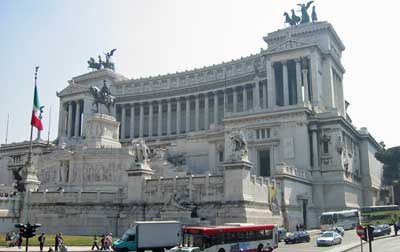
Aside from that it’s just the normal fact that they have updated the timetables as of December 2023 and have a few promotions going on, but those usually don’t happen over the busy summer season.
Eurail passes are now available in a mobile version
Until very recently, Eurail Passes were only available in paper form and they were quite confusing at first. You’d get a pass with a series of empty boxes on it and you’d need to enter your trip before you’d use your pass each day and then have the first conductor verify it. If you lost your ticket (and this was not uncommon), it was a whole ordeal to attempt to get a replacement.
Again in 2024 Eurail offers a fully mobile version that is delivered instantly to your mobile device with no delivery fee. And if you somehow lose your phone, you can resume using your Pass on your replacement with no extra headache. This is MUCH more convenient in every way and as long as you can keep track of your phone you’ll always have your train pass handy.
If your trip will be 2 weeks or less, a Eurail Pass probably won't be worth it
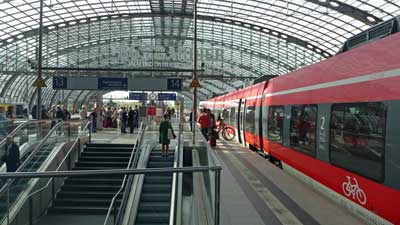
Eurail Passes are ideal for travelers on longer trips, and especially those who don’t want to plan all of their destinations and dates far in advance. If you have your itinerary pretty much planned out and you don’t require much flexibility, you’ll be far better off just locking in your dates and buying your train tickets as early as you can. Again, they can be surprisingly cheap if you buy 2 to 4 months out.
If you are age 27 or younger, a Eurail Pass is probably worth it

With this in mind, if you are lucky enough to still be 27 or younger, you should seriously think about getting a Eurail Global Pass Youth, partly because the sense of freedom instantly gets more expensive at age 28. The age cutoff was 25 until recently, so this change is a great deal for anyone who will be 26 or 27 at the start of their trip.
You aren’t guaranteed to save money by buying a Youth Eurail Pass, but chances are good that you WILL save money and you’ll definitely save a lot of hassle as well. Especially now that Eurail Passes come in a mobile form, it’s even that much more convenient to just hop aboard any train that is about to leave the station and not worry about buying or even having a ticket. Especially for young people, it can be really fun and exhilarating to literally just walk into a train station with your backpack and look at the departure board and then decide where to go at that moment.
If you are age 60 or over, a Eurail Pass could also be great value
Another fairly recent change is that anyone who is 60 years or older at the start of the use of a Eurail Pass now gets 10% off the normal adult fare. That new discount is going to make this a great value for many travelers who might have been on the fence about buying a full-price pass before.
>>>Check prices on Eurail Passes
If you are planning on traveling in 1st Class anyway, a Eurail Pass is probably worth it
Most 2nd Class trains provide similar comfort and legroom to Business Class airline seats, or at least close enough, so for most people it’s not worth the added expense for 1st Class. However, if you are rich or elderly or fear contact with strangers, a 1st Class Eurail Pass is probably worth it no matter what.
Not only do you get much more comfort and legroom in 1st Class, with only 3 seats across instead of 4, but there is another advantage to 1st Class on European trains. Since it’s mostly business travelers and wealthy people traveling in 1st Class, the carriages are almost always mostly empty except in the mornings and late afternoons between large cities. In 2nd Class the only available seats might be two seats in an 8-seat cabin with all the other seats taken up by a loud family or a group of rowdy friends. In 1st Class you are all but guaranteed a peaceful ride, and usually plenty of empty seats from which to choose.
A hidden Eurail Pass benefit: Making extra stops on travel days for free
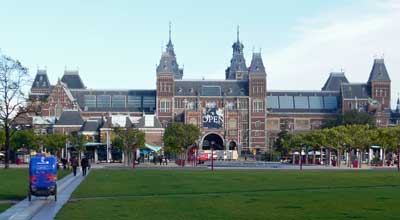
Brussels in particular is one I recommend a short stop in because the small historic center around what they called the Grand Place is amazing and gorgeous, while the rest of the city is rather boring by European standards. With a Eurail Pass you can jump off the train in Brussels and explore the city center for a few hours (luggage storage is cheap and easy) and maybe have lunch, and then hop on a later train to complete your journey to Amsterdam. There are opportunities like this on many if not most trips between larger cities, and if you buy the point-to-point tickets you have to stay on the train you booked.
Another example is the high-speed train between Barcelona and Madrid, which takes about 2.5 to 3 hours in each direction. There are some interesting cities in between, but in this case you could take a morning train from Barcelona to Madrid and then check into your accommodation, and then hop on another train from Madrid to Toledo, which takes about 30 minutes and costs €14 each way. Toledo is a historic and fascinating town, but it’s also pretty small and you can explore the main sights in an afternoon. With a Flexi Eurail Pass where you buy a certain number of travel days, you can save more money by adding on these sorts of nearby stops on travel days.
If you'll be touring major cities within ONE country, a single-country pass might be perfect, and Second Class passes are available for all ages
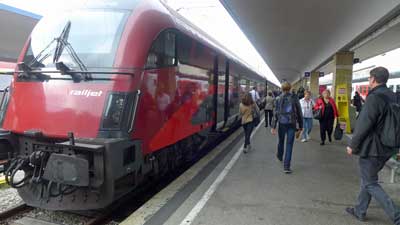
Single-country passes are still available and they MIGHT be good value for you, but it depends on which country and how much traveling you’ll be doing. If you plan on going all over a larger country such as Germany, France, or Spain, and especially if you like to make plans as you go, a Single-country pass for one of those might be your best deal. On the other hand, smaller countries (such as the Netherlands) or countries where train tickets are already fairly cheap (such as Italy) might be harder to get value out of. Long story short, for single-country passes you really need to check fares of the places you plan on going and see how they add up compared to the pass.
>>>Check prices for Single Country Passes
Eurostar (between London and Paris or Brussels or Amsterdam) tickets are now included for Eurail Pass holders for a €30 reservation fee
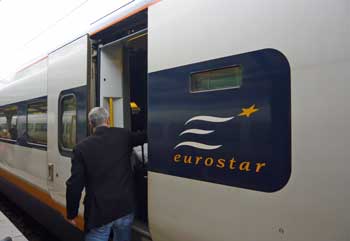
Our recent tests show that Eurostar fares one-way from London to Paris can be as low as €49 if you book about 3 months out, or as expensive as €214 for the same seat if you wait until the day of travel to buy. Round-trip/return tickets can be even cheaper if there is a promotion running.
>>>Check Eurostar prices
If you are on a really low budget, a Eurail Pass isn't a good idea
Here’s the thing. As we’ll discuss below, there are many potential benefits to Eurail Passes, and they will often save you money, but they do cost a lot and they only really save you money when traveling in the more expensive countries.
So let’s say you have a flight to Rome and then US$2,000 to last you a month after you arrive. Buying a Eurail Pass before you go would help you see a lot in that month, but you’d practically need to sleep in parks for your funds to last the whole time. You’d be better off moving slowly in the southern countries, or just in Italy itself, as a way to have the best holiday on your budget. You might also be tempted to use a Eurail Pass mostly on night trains so you can save the cost of a hotel or hostel, but those aren’t ideal for most of us.
The cheapest way to get around Europe by rail is to buy all train tickets online at least a couple months in advance. The fares are low, but they are non-refundable and non-changeable. See how far in advance you should buy train tickets to get those attractive fares.
If more than a little of your travel will be in eastern Europe, a Eurail Pass isn't a good idea
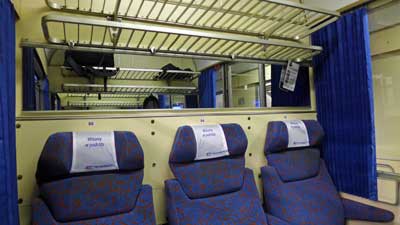
The good news is that the trains operating in this region, and the buses that operate alongside and/or where trains aren’t running, are quite cheap. So if any significant part of your trip will be into this region, a rail pass doesn’t make sense.
Basic types of Eurail Passes
Long gone are the days of the simple options, replaced by specialized passes that are meant to appeal to different styles. It should be pretty easy to figure out which is best for you, and then keep going down the page to decide if it’s worth it at all.
Eurail Global Pass – 4,5, or 7 days within 1 month or 10 days within 2 months
Until recently the minimum number of travel days with 10 days within 2 months, but now you can buy as few as 4 days within 1 month for about €200 to €250 (for first class). This can actually be an interesting strategy if you are planning many shorter and cheaper trips (like within Italy or Eastern Europe), and also 4 or 5 longer trips such as Berlin to Amsterdam. This way you can buy only 4 or 5 travel days and only use them for your most expensive travel days, and just pay as you go or buy cheap advance tickets for your other journeys.
Eurail Global Pass – 15 to 90 consecutive days
This variation allows for unlimited travel on the system for between 15 and 90 total days. They are really only a good idea for people who are certain they are going to travel very often, with much of it being in the north of Europe. The problem with them is that if you really try to get your money’s worth, you will probably ruin your trip by spending too much time on trains in general. On the other hand, if you will be in Europe for 2 or 3 months and plan on traveling around a lot, you can get a LOT of use out of a longer pass. The 3-month pass is around €900 so it’s literally about €10 per day. Imagine going back and forth between Berlin and Munich or Barcelona and Madrid for €10 per day!
One Country Pass
Obviously these are for travel within one country only. Again, they can be great deals if you plan on extensively moving around one particular country.
Where to buy your Eurail Pass
Eurail Passes are cheapest and easiest to buy online, primarily from two main sources which offer all the same products at the exact same prices:
This is a reliable company based in the Netherlands but with fulfillment offices in the US and Ireland. Price of Travel is a partner with this company, and if you use the links of this site we earn a small commission to help keep this site online. Eurail.com is usually cheaper than RailEurope (discussed below) by the way.
They were founded in the 1930s and are based in New York, but owned primarily by the French and Swiss rail companies. They offer free shipping (2 to 3 business days) on all orders of US$399 or more, although now that a mobile version is available, this is meaningless. Price of Travel is a partner with this company, and if you use the links of this site we earn a small commission to help keep this site online.
Reservations on European trains for rail pass holders
For most of the fastest trains between major cities you’ll need to reserve a seat even with a rail pass. It can usually be done just before you leave and the cost is usually around €5. Here’s a full list of which European trains require reservations and which don’t.
Reservations are required on all intercity (longer distance) trains in or involving France, Spain, Switzerland, and Italy. For most trains in Germany, Austria, Netherlands, Belgium, and most of eastern Europe, you can usually find trains that don’t require seat reservations. Often, if you don’t leave until after 9:30am or so, you can ride on any train with no seat reservation, but you have to research each leg to be sure.
How to determine which trains require seat reservations, and also get schedules
You can click on the link just above this section for a list of countries and their seat-reservation policies, but in some cases it’s actually a bit more complicated than that. For example, you can generally ride without a seat reservation on fast ICE (Inter City Express) trains in Germany if you depart after 09:30 in the morning. They do this to free up seats for business travelers who pay full fare, and they don’t mind filling up seats with rail pass holders on trains leaving a bit later.
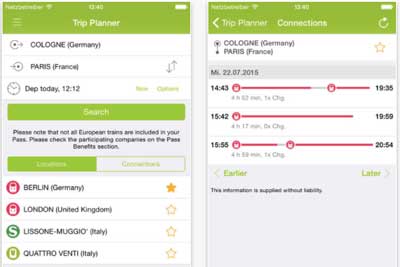
Night trains in Europe are making a comeback
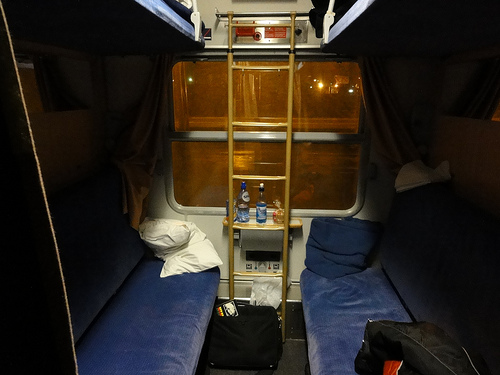
Fast forward to 2024 and night trains are not only expanding service, but they are very trendy. Some of it is nostalgia for the older way of getting around, but most of it is for environmental purposes combined with European hatred for the “low cost airline” experience with RyanAir and Easy Jet etc.
Personally I’m still not a fan of night trains because I find it difficult to sleep on them since they often get decoupled at interim stations in the middle of the night and then coupled onto other trains coming from other places, and I can’t sleep through any of that. But still, they are worth looking into and they are fun to try at least once.
A bit of warning that they tend not to be cheap and even if you have a Eurail Pass you’ll almost certainly want to book a sleeping cabin with a bunk or couchette, and that will come at an extra fee. On the other hand, if you are the sort of person who can sleep sitting upright in a normal seat, then that won’t cost any extra on most overnight trains.
Factors to consider when thinking about any Eurail Pass
Assuming you know which Eurail Saver Pass option is the best one for your type of trip by now, we’ll go over the main factors that should help you decide whether it’s the best idea for you.
Eurail Passes are best for standard ‘medium length’ journeys

However, if you are determined to travel between Rome and Paris, it’s about a 14-hour journey that will almost certainly be overnight. In this case, a cheap plane ticket is probably better, although taking shorter hops on the train is even better, so spend a day or two in Milan or Lyon on the way instead.
And of course, if you prefer to stop in various small towns between the big ones, then a Eurail Pass won’t pay off, except for the traditional kind for unlimited travel in a given period.
Eurail Passes are better value in northern Europe, France, and Spain, and poor value in Italy
Once you do a bit of research you’ll quickly learn that train tickets (and almost everything else) are much more expensive in Germany, Netherlands, Denmark, Sweden, Norway, and Finland than they are in Greece, Italy, Portugal, and Spain. With this in mind, the regional passes can make sense if you are spending time in the south, but the Global Passes almost certainly won’t. Train tickets in Spain used to be fairly cheap, but in recent years they’ve added new high-speed trains between the major cities, and these are quite expensive.
Unlike most other countries, Italy really subsidizes its train tickets so they are quite reasonable even on travel day, and very cheap if you buy a month or more in advance. For example, you can go between Rome and Florence for around €49 if you buy on travel day, and as little as €19 if you buy well in advance. In most other countries, fares are double or triple that much for similar rides.
So consider your planned itinerary. If more than half of it is in the Mediterranean countries then look into a Regional Pass or just buy tickets as you go, because they tend to be pretty cheap. But if you are planning on spending at least half your time in Paris and places to the north of it, then a Eurail Pass is probably a money saver because those tickets are expensive.
Trains are almost always better than planes
Flying sucks, even in Europe
Until you’ve experienced the joy of traveling around Europe by train you might be tempted to “maximize” your time by flying low-cost airlines between each city. This would be a mistake. In order to get truly cheap airfares you have to purchase long in advance, buying non-refundable tickets. You might also have to commit to flights in the very early morning or in the late evening, because cheap tickets on convenient flights sell out quickly.
And again, most European airports are around an hour outside of the city. They are often on the main train lines, which helps, but still you have to deal with the madness of security and also try to get there at least two hours early. From one city center to any other city center it’s about 5 hours minimum, even if they are close, and those are pretty miserable hours.
Train travel is a positive experience

Not only are all the seats comfortable on trains, but you also have an interesting view most of the time. Better still, trains deposit you in the heart of every city, which is usually the neighborhood with the cheapest hotels and food. It’s a wonderful feeling to step off a relaxing train ride, buy a hot dog or sandwich at a local shop, and then be in your hotel room only about 10 minutes later.
Eurail Passes are better than train tickets alone
As someone who enjoys the process of crunching numbers and looking for value, I have to also mention that I’d buy a Eurail Pass even if it seemed like it would cost a bit more than the individual tickets. With a pass you get an extra element of freedom that is worth a lot more than you might expect until you’ve used one.
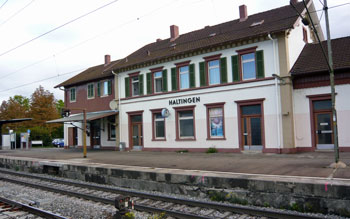
Let’s say you are heading from Amsterdam to Hamburg tomorrow morning. The 09:00 train you planned for might seem a bit ambitious after a long night out, so you can instead opt for the 10:00 or 11:00 train. As long as you walk into Centraal Station 10 or so minutes before departure, you are on. If you are flying you can’t change your ticket, and if you are buying train tickets as you go you have to be in line at the international desk at the train station at least 30 minutes early, and even then you might miss it if they are busy.
Freedom and getting to feel like a big shot
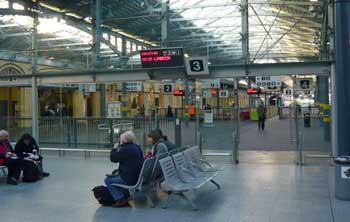
Let’s say you are staying at a hostel in Brussels, and two groups of new friends suggest that you go along with them to their next stops. One group is going to Bruges, which is a short and cheap journey, so you can join them by buying individual tickets (unless you have the unlimited pass, making it free). Then you restart your trip from Bruges, on to your next destination. The other group is headed to Berlin on a night train, which is long and expensive, but with a Eurail Pass you don’t even have to think about the cost. On you go, just like a rich person.
Buying a Eurail Pass is great for those who might run out of money
We all know people who keep meticulous track of every penny they spend, and who are always putting money away for a rainy day. And we all know people who can take a US$100 “entertainment fund” and burn through almost all of it in just a few hours. For the first type of person, a Eurail Pass can help you keep track of expenses, but it’s really the second type of person these are best for.
It’s sad to hear about people who have big plans to see their dream destinations, but they run out of money for transportation halfway into the trip, so they have to just stay put until they fly home. It happens. Locking in your major transportation costs before you leave home, and probably saving money in the process, is a wise move for anyone who isn’t as disciplined as they’d like with their money.
>>>Check prices on Eurail Passes
Bottom line: If you want to keep travel costs down, your choices will usually be a Eurail Pass or buying tickets at least a month or more early
In the last few years, almost every long-distance train ride in Europe has switched to a pricing system similar to low-cost airlines. In other words, tickets go on sale 2 to 6 months ahead of time at very low prices, and they keep getting more expensive as the train fills up and the date approaches. For most trips where a rail pass is possible, this is how things stack up:
Cheapest possible way: Buy advanced (non-refundable, non-changeable) train tickets at least 30 days in advance
Next cheapest way: Buy a Eurail Pass and make seat reservations as you go, usually only a day or less in advance.
Most expensive way: Buy train tickets as you go, or less than a week in advance.
Thinking about it this way should make the choice a bit easier. If you are the type who likes to plan each day and travel segment long before you even leave home, then buy tickets online for the best prices. This can be the best strategy for most shorter trips (10 days or less) because you simply don’t have enough time to change many things as you go anyway.
Buying a Eurail Pass won’t be quite as cheap, but you are buying a LOT of flexibility with the extra money. If you dream of making up your plans as you go, or even making up your plans just a few days in advance, this is almost always your best bet.
But if you wait too long, and just show up looking to buy train tickets as you go, they are going to cost a fortune. As recently as only a few years ago all seats would be the same price on many rail systems, so you could always just wing it. When each country computerized its rail systems so they can sell advanced tickets cheaper, they also had to keep track of seat reservations, so the whole pricing structure had changed to favor advanced ticket buyers and rail pass holders over those who’d prefer to just hop on any train as it is leaving the station.
Have a rail pass or itinerary question of your own?
It wasn’t planned but scores of people began asking me rail pass and itinerary questions at the bottom of this article and a few others. I’m happy to keep answering them and now I’m trying to organize them better as well so they are easier for other people to find.
If you have a question about specific types of European rail passes, please ask it in the comments below.
But if you have a question more about a European itinerary or other non-rail-pass questions, please click over to the European itineraries Q & A article and ask in the comments of that one.

Hi Roger,
My friend and I will be going to Europe for 2 months this Fall, and found your article very helpful. We had a couple of other questions we were hoping you could answer for us. We plan to go to Sweden, Denmark, Germany, Austria, Hungary, Slovenia, Czech Republic, Croatia, Italy and Greece. We have been thinking of getting the Eurail Youth Global Pass for 15 days within 2 months, and were wondering if this would be the best pass for us given our planned destinations. We also had a question regarding how these 15 days would be counted that we weren’t seeing an answer to on the website; If we wish to take the train from, say, Berlin to Vienna and there are a couple of connections we’d have to make, this would still be counted as one of our 15 days, correct? And similarly, if the route between one destination and the next is a night trip, would that still qualify as one, even though it’s technically on more than one “day”?
We also plan to take ferries from either Split or Dubrovnik in Croatia over to Bari, Italy, and later from Bari to somewhere in Greece. Do you know if there are ferries between these locations that would be covered by the Eurail Pass?
And final question, In Sweden we plan on visiting my travel partner’s relatives near Umeå and then travelling to Denmark. For this particular leg of the journey would you recommend taking the train or flying?
Thank you very much for your informative articles, and I hope to hear from you soon!
Sydney
Sydney,
This looks like a great trip, and I’ll be happy to try to help. In the order the questions appear…
Yes, a “travel day” in a Flexi-pass is good for any number of different train trips on one day. Not only does it only count as one day when you have connections between major destinations, you could actually just take a train back and forth between two cities all day and into the evening and it would still count as one day.
For night trains, the “7pm rule” determines the answer, and that means that any overnight train that leaves after 7pm counts as only the arrival day on a Flexi-pass. Fortunately, all real night trains leave after 7pm, and most of them leave more in the 9pm to 11pm range. So let’s say you board a night train leaving at 10pm. You only have to validate the following day on a Flexi-pass, which means that you can basically ride for free the following day if you choose to. This is a good trick to work a day trip into a holiday, since once you arrive in the morning, you still have the whole “travel day” ahead of you.
On the ferries, none of the ones leaving from Croatia are included or provide discounts, but several ferries from Bari to Greece (Corfu, Igoumenitsa, and Patras) are included for free when you use a travel day. If you do consider those, check the normal fares before you commit to it because some of them might be fairly cheap if you just paid for them.
For the Sweden part of your trip, that’s a tough one. I’d never actually even heard of Umeå until just now (so thanks for that!) and it looks like the only flights are from Stockholm so if you started in Copenhagen you’d have to change planes. Even worse, it doesn’t look like any flights are particularly cheap, even on Norwegian Air and its low-budget service. It looks like the “high speed” train from Copenhagen to Umeå takes about 13 hours each way, but at least it would be covered by a travel day on a rail pass. A night train could be a good option on that route, partly because I don’t think the scenery is too special. It’s very flat, and there are trees everywhere, which would get boring quickly. If it were me, I think I’d do the train because the flights are expensive and a hassle, and I really like riding on trains.
I do think that a Global Flexi-pass with the Saver option of two traveling together is probably a great choice for this trip. Just be aware that there is essentially no train service in Greece these days, so you’d only have a chance to use the pass on some of the ferries. And trains in Croatia don’t go south of Split, so you have to take a bus down to Dubrovnik.
Rather than 15 travel days, you might do better with only 10 travel days, and paying separately for your cheaper journeys. It all depends on how many longer trips you have in mind, obviously. For example, a 2nd Class ticket between Rome and Florence would only cost about €50 if you bought it at the last minute, and more like €20 if you bought it a month or more early. If you want to make all of your travel decisions at the last minute (which is really fun), then a bigger rail pass is probably better. But if you would be able to buy at least some of the cheaper tickets in advance, that might be cheaper.
Let me know if you have any other questions. I’m sure you’ll have a great time. -Roger
Hi Roger,
I really appreciate your input – thank you so much! It is actually my 3 kids traveling, ages 22, 20 and 16. They will be flying standby because I work for the airlines. The best city for them to arrive and depart is Amsterdam (it has the most flights in and out to the states daily on my airline). I would like your input on this tentative itinerary:
July 13 leave US
July 14 Amsterdam (they have seen Amsterdam in the past)
July 15 night train to Munich, on to Heidelberg
July 16-18 Heidelberg
July 18 train to Munich
July 18-21 Munich (possible day trip to Salzberg)
July 21 train to Prague
July 21-23 Prague
July 23 train to Munich with night train to Amsterdam from Munich
July 24 Amsterdam
July 25 flight home
Is this too much? What should we rethink?
Thank you,
Gaylan
Gaylan,
It’s certainly a busy schedule, but I don’t think it’s too much, especially for people in that age group. Salzburg is a favorite of mine so it’s a shame they’d only do a day trip, but I’m sure it would be a very enjoyable day so I think it’s probably a good idea.
The one thing that does stand out as odd is using Munich as a hub for the trips where it’s far out of the way. In other words, most people would go directly from Amsterdam to Heidelberg and then later to Munich, and then to Prague and then directly back to Amsterdam. I’d imagine that you realize that all those trips to Munich would add many travel hours to each of those travel days, and probably make for more expensive train tickets. However, I’ll also guess that you’ve got a reason for that circuitous route, and if so, then never mind. Otherwise, it all looks great. -Roger
Thank you so much for your input. We are changing our plans to go directly to Heidelberg from Amsterdam and then directly to Amsterdam later from Prague. Excellent advice!!!
Hello Roger,
If a Eurail pass train ride is reserved can it be changed to another train ride if plans change?
Thanks,
Gaylan
Gaylan,
I’m not sure if you could get a seat reservation back (probably not), but the Eurail Pass is only charged (or used) on the train itself. It’s confusing so I’ll try to explain it. When you get a seat reservation, they give you a little card with the seat number on it and the cities that it’s valid between. It says right on it, “this reservation is only valid when accompanied by a train ticket” or something like that. If you bought an individual train ticket, it would be another little card that had the fare price on it, but a Eurail Pass takes the place of that part. When you get on a train, the conductor will come by and check or punch your rail pass for that day or that journey, and only then are you locked into that ride. But Eurail Passes are actually good for “travel days” rather than individual rides, so you can take another train later in the day and the conductor would just confirm that your pass had been validated for that day already. -Roger
Hello Roger,
If I am traveling from Amsterdam to Munich on the overnight train and then continue on to Heidelberg the morning I arrive in Munich, is this considered one day of travel or two days of travel. Or if we stop in Munich is it considered one day or two days of travel if we travel overnight? We are planning on buying the 4 country/ 5day eurail pass.
Thank you.
Gaylan,
That will all be one day of travel on a rail pass. There is something called the “7pm rule” on overnight trains, which says that as long as a train leaves after 7pm, it only counts as the arrival day. Your train from Amsterdam will undoubtedly leave after 7pm, so you can also ride around for the whole following day on the same punch. In other words, you leave Amsterdam at 9pm, arrive in Munich at 7am, and you can spend a few hours in Munich before hopping an afternoon train to Heidelberg and it’s all one “travel day.” Using a rail pass like this is one of the “hacks” to get the most use out of it, so it’s kind of a little bonus. -Roger
Hello Roger,
I find it amazing how you’ve been able to provide answers for the last 2 years, and help so many people along the way. After reading your site/comments for the last 3 hours, I think i’m ready for my question, is the Eurrail worth it?
I just received my degree (i’m 24, discount’s!) and am now pursuing my dream of back-packing most of Europe. I will be spending about 100 days in Europe, with the last 10 or so in the UK as to not incur visa problems. I booked my flight to Lisbon for Aug 5, and am still searching for a return flight from London around Nov. I believe travel within Europe will cost me the most, and was weighing whether or not to get the 2 or 3 month Global Pass continuous, or attempt the last minute flight/train deals/scams instead. It’s a little difficult to plan transportation in advance as i’m not sure how long I will be in each destination for. My “rough draft” itinerary is as follows:
Lisbon>Barcelona>Madrid>Seville>Nice,France>Switzerland (1-2 cities)>Milano>Florence>Rome>Naples?>Venice>Croatia(1-2 cities)>Budapest>Vienna>Wachu or Salzburg>Prague>Munich>Berlin>Cologne>Copenhagen?>Amsterdam>Brussels?>Paris+(1-2 cities)>UK
Is this a little ambitious for 90 days excluding UK? I like the idea of the freedom of the pass and being able to leave whenever you want as you mentioned. I’m confused tho, you mentioned France and Germany utilize a different train,and would need to purchase an additional ticket, but when I look at eurail.com it shows them as part of the Global Pass destinations? What method/route/plan/transportation would you recommend? I will be in Lisbon for about 7 days (pass not yet activated), and ending in London for 7-10 days, so a 2 month pass may be more cost effective than a 3 because the first 2 weeks after expiration I will be around Amsterdam and France and can decide travel from there (bus,train,flight)? Also, how much in booking fee’s may I be looking at? Any of your thought’s are greatly appreciated. Thank’s again for your time and more so your help.
Mike
Mike,
This is one of the parts of this job (running this website) that I enjoy most, so I’m always happy to try to help people with these things. And having studied all of this for so long, it’s nice to be able to put this information to use.
I’m not sure what you are referring to with France and Germany. Both countries are completely included in all of the rail passes, although France had opted out of the Select Passes for a couple years until recently. France also has a rail pass quota on its most popular high-speed routes, so it’s wise to get a seat reservation as far in advance as possible. Those trains also have relatively high seat-reservation fees. Germany has no quirks like that, at least that I’m aware of.
On such a long trip, it’s difficult to say what the ideal pace would be. Generally, I think 3 days in any given city is long enough to appreciate it and not get burned out too quickly, but even at that pace, you’d want to take a break every few weeks to prevent it from becoming a grind. So in other words, I think you’ll want to build in at least 2 or 3 little mini-vacations where you purposely avoid sightseeing and focus more on your mood and being refreshed. With that in mind, that you’d include, say, a 3-day break every 3 weeks, you could easily make 20 to 25 stops without feeling like it’s all passing by you too quickly. That’s about how many you have on your list, so I don’t think it’s too ambitious. That said, once you are on the road you might discover that you prefer to go more slowly and chill out in every other city.
As for a getting a rail pass, I DO think it would be a good choice for you. One major complication is that there is no longer such thing as “cheap last minute transport deals” in Europe. The trains now work just like airlines in that fares are weirdly cheap when they first go on sale, and the price keeps marching up as seats are sold and the travel date approaches. It’s sometimes possible to get short-notice deals on buses (eurolines.com), but I’d use that as a last resort option.
So your cheapest option would probably be to buy all of your train tickets at least a month in advance. A few of them, like those in Italy and Hungary, would be pretty inexpensive that way. But you’ve also got a great number of journeys that are fairly expensive in advance, and outrageous if you wait until a day or two before you want to leave. You can check some of the fares on my recent post about how early to book European train tickets.
But your most enjoyable option would be the continuous Youth rail pass, no question. Except for those few trains within France, you will usually have no problem getting a seat reservation on travel day or the day before. As I’ve said many times before, my own preference is to get them a day or two before I want to leave so I can leave just enough time to get from my hotel onto my reserved seat before the train leaves. The reservations average around €5 each, and in some places you won’t need them at all. As it sounds like you already appreciate, it’s a wonderful feeling to have the freedom to go almost anywhere at the drop of a hat, without worrying about insanely expensive last-minute flights or train fares. Even if you complete your trip and you mostly stayed on your original plan, it’s still wonderful to have had that peace of mind the whole time. The other cheap option would be to lock everything in a month or more in advance, and that gets exhausting.
And in general I think your itinerary looks fantastic. I’m sure you’ll consider adding in some side-trips or additional stops, and if you have a continuous pass, you can just move around the continent as you please. For example, take a look at Krakow when you are in that area, and Bruges is fun for a couple of days when you are near Brussels. Your strategy of activating a 2-month pass on the night train from Lisbon to Madrid is wise, and you should be able to figure something fairly cheap out for that last part. From Paris to London you’ll probably want to take the Eurostar, which is pretty affordable if you book a couple months in advance. But if you aren’t in a big rush, you can actually do it cheaper on a bus, which drives right onto one of the freight cars and drives back onto the highway at the other end.
It feels like I probably missed some things, so please feel free to write back if I did, or if you have more questions. I’m also planning my own upcoming Europe rail trip at the moment, so this is on my mind a lot. -Roger
Hi Roger,
I am travelling along with my friend (more than 26 years) to Switzerland., Austria & Slovenia in July -2014 for two weeks trip. My Itinerary is as follows :-
1) Reaching Zurich and going to Interlaken
2) visit jungfrau
3) Visit Mount Titlis
4) Go to Innsbruck
5) Go To Salzburg
6) Go to Vienna
7) Go To Lake Bled
8) Go to Piran
9) Go to Ljubljana
10) Fly from Ljubljana to Zurich
Can you suggest me whether 4 country euro rail pass will be useful for me
rajesh,
You won’t actually be covering too much ground on this trip, so I don’t think a Eurail Pass would be good value. Train passes can be helpful when you are including at least a few trips that would be very expensive on their own, and none of yours would really qualify. It’s true that train fares in Switzerland can be quite expensive if you wait until travel day to buy them, but your trips are only 2 or 3 hours, and if you buy at least a few days in advance they shouldn’t be too expensive. Also, the train trips within Slovenia are probably quite cheap no matter when you buy them.
If you want to keep costs down I think your best bet is to buy all of the train tickets online as early as possible. I think the Swiss Rail site only starts selling domestic tickets one month in advance, so with those you’ll still have a chance at the lowest fares. Let me know if you have other questions about how to do this. -Roger
Hi Roger,
Thanks for your prompt and valuable response.i will book point to point tickets.Can you suggest me the website for booking that.
rajesh,
You’ll want to buy rail tickets ONLY through the official websites of each national rail company. There are other outlets that sell these advanced tickets, but as of now, they charge quite a high additional fee. I have links to most or all of the websites on this page about how early to buy Europe train tickets, along with how far in advance they go on sale. -Roger
Thanks a lot Roger
Hi Roger, thanks for all the information, it is very helpful.
Im planning a trip for about 7 weeks that will go something like this;
Rome > Florence > Cinque Terre > Venice > (maybe Budapest) > Prague (& Cesky Krumlov) > Berlin > Amsterdam > Paris > London
Im also considering Krakow and well as another stop within Germany and/or France. Because of the fact that Im not exactly sure I like the idea of being able to change plans sightly as I go. Am I right that a Eurail Global Pass Youth (I’m 21) for 10 trips would be a good way to go?
Are there any legs that you would recommend flying? Am I right that Paris to London would not be included in the Eurail Pass?
One last question, if I decided to take a night train or 2 to save on a nights accommodation, is there an extra fee if im using the Eurail Pass or is that just another trip that is included?
Thanks again, I really appreciate the tips.
Nic,
In 7 weeks I think you could add a few more stops to this and still not feel too rushed. My preference is 3 or 4 days in the larger cities (Rome, Paris, Berlin, London), and 2 or 3 days in most of the rest. At least those are the minimums that I think it takes to really do a city justice on a first visit. It’s unlikely that you’d get bored by staying longer in any of them, so it would be great to have that flexibility as you say. I’d definitely add Krakow to this trip, and probably Budapest as well. Those both just happen to be the two that I consider the “best value” in Europe in that they are interesting, important, and quite cheap at the same time.
Especially if you are going to add a couple more stops, I agree that the Global Youth Pass with 10 travel days in 2 months is your best bet. If you end up taking 12 or more total trips, which I think would still be a fairly relaxed pace, then you’d want to pay separately for the cheaper ones you have planned. The Florence to Cinque Terre train is pretty cheap on its own, and Rome to Florence is pretty cheap as well, as long as you buy it more than a few days in advance.
All of your trips will be best by train, and almost all of them will be faster that way, or very close to it. It looks like most of your planned journeys are between 3 and 6 hours apart by train, and of course the shortest flight is around 5 hours when you factor in the airport transport and security check time etc.
The Paris to London trip is only available by Eurostar train, so you are correct. It’s a separate system, and buying early is critical for the best fares.
The night train situation is a bit complicated, and on shorter trips like most of yours, there is no night train option. But when there is a night train option, your rail pass would cover a ride on the night train, but you still have to pay extra for a seat or a bunk. A normal seat is usually only around €5, but if you want to sleep at all you’ll want to reserve a couchette (bunk) and those cost and extra €20 to €30 in most cases. They are pretty comfortable (at least for people who can sleep while being jostled around a bit), but they often aren’t a good way to save money because the couchette costs about the same as a hostel bed anyway. I’ve written about night trains in Europe to explain the advantages and disadvantages, so that might be worth a look.
So again, in 7 weeks I think you can cover quite a bit more ground than your initial list, and a Youth rail pass will keep the costs under control. Let me know if you have other questions. -Roger
Thanks for the quick reply Roger, really appreciate your comments.
Yes we booked Oktoberfest through fanatics tours back in March so all sorted there! Can’t wait for it.
I’ve had a look at Krakow and it looks great and conveniently placed for where we will be around. Has it got quite a popular nightlife? We are definately up for the nightlife but want to make sure we experience a lot of the sights and history as well.
How would you recommend we travel between Munich, Prague, Vienna, Budapest, krakow, Croatia areas? Are we best to purchase a train pass or just look around for train tickets as we go?
Thanks for the sunny beach review also, maybe Croatia is better off for us.
Once again any help re these questions would be greatly appreciated.
Cheers,
Nick
Nick,
Very good news on your early Oktoberfest booking then. I attended a few years ago on a day-time stopover between Dresden and Innsbruck, and I had to wait in a long queue with the hopes of getting into one of the “tents” like an idiot because I didn’t have a reservation and wasn’t even aware that they were needed. The only reason they let me in without a really long wait was that I was alone, and they only let me have a specific seat at a (crowded) table for one hour. It’s a blast once you are inside, but kind of a hassle until then.
Krakow is one of a handful of cities where cheap drunks from Britain (and elsewhere within Europe) fly into for stag parties and general nonsense. The cool part of town for nightlife there is the old Jewish Quarter, which is maybe a 20-minute walk from the old town center. It’s easy to find, and filled with interesting little bars and pubs and such. Best of all, Krakow (Poland’s former capital) also has a gorgeous city center, a castle (sort of), and many interesting sights. You have to visit Auschwitz, which is easy to do on a half-day trip from Krakow. There is also a salt-mine attraction in the area, which I skipped but heard good things about.
You’ll want to take trains between all of those cities, at least as far south as Split. The complication is that you probably aren’t doing enough trips for a Global Eurail Pass (10 travel days is the minimum for a Flexi pass), and you are visiting too many countries for the 4-country Select Pass, which starts at only 5 travel days. But you might actually get good value out of a 21 continuous days Youth Pass, which is US$692, although you’d probably want to be doing at least 8 or 9 journeys for that to make sense. By the way, if you are UK/European residents, you’d look for the Interrail Pass, which is probably a bit cheaper, although with more restrictions.
The cheapest option would be to buy all of your train tickets at least a month or more in advance. Check out this article on how early to buy European train tickets and you’ll see examples of how cheap they are when bought way in advance, and how expensive they are when you don’t. The downside to that is that these tickets are all non-refundable and non-changeable, so you have to lock in your whole trip long before you leave home. Many people prefer not to do that (I’m one of them), and in that case, the rail passes look much better even if they aren’t quite as cheap.
The only thing about using rail passes like that is you have to pay for seat reservations (about €5 each) on most trains you’ll take. You are going in shoulder season, so it really shouldn’t be difficult to reserve seats the day before you want to leave or even the day you want to leave. That way you can just drift around as you please, without worrying about transport costs anymore. It sounds like a great trip in the making. Feel free to ask other questions as they come up. -Roger
Hi Roger,
Just come across this site and it’s a great read!
I’m hoping you could provide some advice for an upcoming Europe trip for my brother and I.
We are going to get a flight to Amsterdam from London on Monday sept 15, 2014 most likely to stay two nights with a friend. The plan is then to get a train to cologne (possibly for a night) and then another train to Munich for Oktoberfest arriving on the Friday. Would you recommend this route?
After Oktoberfest on Monday sept 22 we will journey off and just need to be back in London on October 4 so essentially around 12 days of travel. I must mention that ideally we would love to not plan anything and just ‘go with the flow’ however I am not sure how possible this will be?
Our desired list of places is:
Vienna
Prague
Budapest
Croatia (split or Dubrovnik)
Bulgaria (sunny beach)
A flight back to London (not sure where from yet)
Do you think this is achievable with the lack of public transport as opposed to western countries and is there a route you would suggest? I understand we may have to postpone one or two places for a future trip.
We will stay in hostels and we just want to experience Europe in backpackers style not having everything pre planned in case we meet people along the way etc.
We are 24 & 21 years old.
Any advice would be fantastic!
Cheers,
Nick
Nick,
Yes, Amsterdam to Cologne and then to Munich is as direct as you are going to get for a train route, although it’s not terribly scenic until you are south of Munich. Hopefully you’ve researched the Oktoberfest situation because accommodation is very expensive during that period and even getting into the beer tents on the main grounds isn’t as simple as you might expect.
When you mention your ages, I’m going to assume that you’d be happy visiting some of Europe’s best party cities, and if that’s true I’ll recommend Prague and Budapest on your list (and Krakow that isn’t on your list). Those cities all have interesting and sometimes edgy nightlife, including very appealing prices on drinks and such. Look for the “ruin pubs” in Budapest for some nights that you won’t forget, and beer for about €2 or less per .5-liter.
That could also be a good time to visit Split and/or Dubrovnik because it should still be the end of the beach-weather season, and yet most of the package tourists (from Germany and Scandinavia) will be gone.
The only place I’ve been to in Bulgaria is Sofia (several times, actually), and I don’t hear many raves about Sunny Beach or anywhere else on the Black Sea for that matter. It seems to be a regional beach holiday town like Blackpool in England or Atlantic City in the US. In other words, they are beaches that are popular with people who might not be able to afford to fly to a Greek island or one of Spain’s beach resort areas. Here’s an article I wrote discussing the various cheaper beach destinations in Europe, which may give you some ideas.
The last thing I’ll recommend for now is to do advance research on which cities have cheap (or reasonable) flights back to London. At least a couple on your list are served by EasyJet and/or RyanAir, and there is also Wizz Air. But some of those other cities have small airports where a flight back to London (especially booked at the last minute) would cost a fortune.
That time of year you should have no trouble getting beds in some of the better hostels, but I do recommend booking them online as soon as you are sure you are going to that city, which hopefully will be at least a day or two in advance. The thing is, there are a small handful of really popular and well located hostels in each city, and they of course are the first ones to sell out. If you wait until you arrive, there’s a decent chance you’ll get shut out and have to walk to a crappy one. But if you book online a day or two in advance, you only have to put about 10% down as a deposit, so even if you miss a train or change plans totally, you are only out €2 or €3 per person. Bon voyage, and feel free to ask more questions if you have them. -Roger
Hi Roger,
What luck to stumble upon your website! Just the person I needed to answer my queries. Very rare to find a forum where someone painstakingly answers each query and in such great details. So here goes…
We are a family of three (2 adults and one child age 5 years) traveling from US to Czech Republic, Germany and Denmark for 2 weeks in August 2014.
Flying into Prague – staying 4 nights (may do a day trip somewhere nearby)
Dresden – 1 night
Berlin – 3 nights
Hamburg or Hannover – 1 night (visiting friends mainly)
Billund (Legoland) – 1 night
Odense – 1 night
Copenhagen – 4 nights (fly back home)
First off, does the itinerary look doable with a kid? We like to explore the usual places of tourist interest but also like to soak in the local atmosphere by lingering around public places like plazas and cafes, etc.
More pertinently, need your advice on travel between the cities. I realize that most of the intercity distances are short and also, my husband would like to drive some of this itinerary (for the experience of driving in Germany/Europe) if that is plausible. Here is what I was thinking:
Buy individual train tickets for:
1) Prague to Dresden
2) Dresden to Berlin
Rent a car at end of our Berlin stay to drive to Hamburg/Hannover (we would only do one of these cities) and keep it for about 4 days until we get into Copenhagen. So, we’d cover Berlin-Hamburg-Billund-Odense-Copenhagen segment by road.
Does this even make sense? If yes, what are our car renting options? If not, what would be viable alternative(s)? For the trains, would you suggest advance booking? If yes, how much in advance?
Lastly, what would be your advice on local transport within city travels while in Prague, Dresden and Berlin? Are there city and/or regional passes that will serve our purpose of sightseeing?
If we dropped the car option, would it then be advisable to buy the Eurail pass for 4 countries? Does it include local travel within the cities?
Thanks in advance for your input.
Namrata,
I’ll be happy to try to help. Not knowing how well your child handles long rides it’s tough to say, but I do think it’s a pretty reasonable schedule. The three 1-nighters in a row could get tiresome for everyone, but with Legoland in the middle, let’s hope that your child is enthusiastic enough to be fine with it all.
Normally I don’t recommend driving or renting cars on Europe trips, but in your case it could actually work out okay if you don’t mind the high price of a rental. The highways of Germany are notoriously well maintained, and those of Denmark are generally the same. Parking and toll roads are also challenging issues in much of Europe, but not nearly as much on the sort of trip you have planned.
The downside of car rental there is the cost. I just checked a 4-day rental from Berlin to Copenhagen in August and the cheapest rate I see is US$138 per night for an economy car. You might get a lower rate, but probably not by much because only the larger and most expensive agencies do one-way rentals from one country to another. Europcar is the biggest agency, but there is also Sixt, which is based in Germany, and I had a great experience with them renting in Iceland. The cost of fuel is high as well, but with a smaller car it shouldn’t be a big issue.
If you don’t want to rent a car, then trains are definitely your best option. If you buy those train tickets well in advance online (go to bahn.com, the German rail site), they will be relatively cheap, but if you bought them only a week or less before you go, they will be very expensive. Once you decide on the car or not, I can help you more sorting trains out.
For local transport, you’ll find that it’s quite easy in all the cities you’ll visit. Europe does this better than anywhere else in the world, and you can get around pretty easily even if you only know English. In Prague, you’ll want to mostly walk in the city center, including both sides of the river. For longer trips you can take the tram there, which is very cheap and easy to figure out. Dresden is small enough that you can see it all on foot. Berlin is a huge city and you’ll need to take public transportation to get between the main sights. But it’s easy, and everyone there speaks fluent English (for the most part). For sightseeing you might consider the Berlin Pass, which includes all the main sights at a reasonable price, including a couple of good tours.
A rail pass could be a good alternative to renting a car, but only if you prefer not to make all of your reservations way in advance. It gives you flexibility to change plans as you go, but it wouldn’t be as cheap as buying those train tickets two months in advance. Eurail Passes do not include local transport (except in a few cases), but the good news is that you can get a 24-hour transit pass in any of these cities for about €6 per adult. Feel free to ask more questions if you have them. -Roger
Roger,
Thanks so much for your prompt and detailed response and before I go any further, I would like to apologize for the massive delay in my thanks (My earlier comment was a month ago on May 27). I was totally sidetracked into other things and finally have the chance to refocus on planning our travels. In the meantime, our plans are somewhat reconfigured in terms of the order of the cities/dates and how we will travel between them. So, the new itinerary looks like:
Flying into PRAGUE – reach afternoon, stay 4 nights (3 full days and 2 half days); take evening train around 6 PM (2 and 1/2 hours) to ?
DRESDEN – stay 1 night, sightsee next day and take evening train around 6 PM (2+ hours) to ?
BERLIN – stay 3 nights (2 full and one half day); take train in evening to ?
HAMBURG – stay 1 night; fly next evening to ?
COPENHAGEN – stay 3 nights (2 full days); take morning train (about 90 min) to ?
ODENSE – sightsee in day and stay 1 night; rent a car next morning and drive (90 min) to ?
LEGOLAND – a day trip and drive (3 hours) in the evening back to ?
COPENHAGEN – stay 2 nights (fly back home)
So, we have switched around a little bit to avoid the three 1-nighters in a row. Also, there will be limited driving now in Denmark only. There are no direct train connections to Billund, so driving there made more sense. As an aside, would you know where I could find information on child car seat requirements for Denmark?
I have already booked the flight from Hamburg to Copenhagen as I found a reasonable fare. I still need to do the four train bookings (all short distances varying from 90 minutes to under three hours). I plan on buying the train tickets in the next couple of days for these 4 segments and need your help in clearing a few queries.
1) When I search fares on bahn.com, I get two options: Saver and Standard fares. I understand saver (cheaper option) locks me into specific day and specific train but can I exchange/refund with a fee if we change plans. In the standard, it says – “Full flexibility (no obligation to travel with a specific train). Exchange/refund free of charge, or from first day of validity for a fee.” In the second one, does it mean we show up on the station and can travel any day/any train on or after the date of ticket or I will need to cancel and buy a new ticket should we have a change in plan? Just wondering if we should spend the extra for the standard over the saver.
2) Should I do seat reservations while buying the tickets or these can be done later? The reservation would be for a specific train and time, I guess.
3) Should I book the Copenhagen to Odense train ticket in advance as well? that would have to be the Danish rail website, right?
Finally, a question about sights of interest. Would it be worth/advisable to make a day trip (through a tour consolidator like Viator) to Cesky Krumlov from Prague if we have three and half days in Prague or is that overkill?
Similarly, is Potsdam something worth considering if there are about 3 days in Berlin?
Thanks again! I really appreciate all the help.
Namrata
Namrata,
No worries about any delay in responding. To be honest, I pretty much just take these questions as they come and try to answer them all within 24 hours. I have to remind myself of the previous questions, regardless of when follow-up questions come in, so it works out the same.
I think your new itinerary looks really good and sensibly put together. Driving within Denmark should be pretty stress free compared to driving from one big city center to another in other countries. I’ll try my best to answer your questions…
1) This is confusing and I’m not sure myself, but it appears that with a Standard fare you can use it on any train on that route. However, most of the long-distance ones (like Berlin to Hamburg) require a seat reservation so you’d need to pay for one of those on the train you actually ended up taking (about €5 each). So the Standard fare is like a travel voucher, and the seat reservation is a separate little ticket that the conductor will also want to see. With Saver fares, it appears that there is a €15 per ticket fee to change them.
2) I haven’t bought a ticket from Bahn.com lately, but I do know that usually an individual ticket will also include a seat reservation in the price if it’s a route that requires them. So if that’s the case then you’ll obviously want to reserve a seat for free when you buy, but you can also make seat reservations later. So if you changed your mind on which train to take, you can exchange the ticket itself, and then pay for a new seat reservation.
3) Yes, in pretty much all cases with European train tickets, buying early will save money. In this case, Denmark has what they call an “orange ticket” that is discounted, but if those are sold out then it looks like the fare won’t change if you bought it soon or bought it on travel day. So have a look at the Danish rail site and if you see an orange fare for the one you want to take, buying it will be a discount.
I’ve yet to make it to Cesky Krumlov (although I’ll be there in October), but I hear great things and it’s definitely the second most tourist-oriented town in Czech Republic. Prague itself is a really entertaining city and you definitely won’t get bored in 3 days, especially if you are also dealing with a bit of jet lag that could slow you down. But I also think you can see the main Prague sites in 2 or 3 days, so you might find that a day trip could be worthwhile. I highly recommend just waiting until you get there to decide. There will be no shortage of opportunities to book that very same trip once you are in Prague and know how much energy you have. In my own experience, it also tends to be much easier to get a better price from the city compared to on Viator or another tour-booking site. Those sites tend to actually have the highest prices you’ll find, and the only real advantage is that some people feel less stressed if they have activities like that locked-in before they leave home. I can almost guarantee that it will be cheaper if you book from Prague anyway, or you could just take a train there and do sightseeing on your own, for even less.
I haven’t been to Potsdam since my youth so it’s harder for me to put in perspective. But my advice will be the same in that if you decide to visit you can do it on the spot with no trouble. Berlin itself is huge though, and really interesting, so you definitely won’t run out of things to see in 3 days. It will just be a matter if seeing Potsdam outranks some of the other Berlin sights that you’d skip in order to visit.
I’m sure you’ll have a fantastic trip, and you’ll find that most of this stuff is quite easy once you are actually there to see all the options available. -Roger
Thank you Roger for all your valuable advice and input. They really helped in making our travel decisions and finally we seem to have most of our plans in place.
Namrata